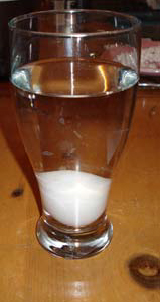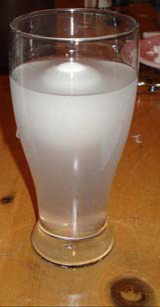Floating Egg
Learning Objectives
Students will observe the change in density caused by adding salt to fresh water.
Associated Curriculum Topic
Pure Substances and Mixtures
Materials
- 2 eggs (hardboiled or raw will both work)
- 2 glasses 500ml or larger (or beakers if you have access to some)
- Water
- Salt
Introduction/Motivation
Some students may have gone swimming in the ocean and noticed that it is easier to stay afloat compared with swimming in fresh water. This is particularly true in the Dead Sea in the Middle East, where the salt content is so high that humans bob like a cork in this water!
This activity will show students that adding salt to tap water can change the physical characteristics of the liquid. When an egg is placed into a beaker full of water it sinks to the bottom because the egg has a higher density than the water. However when salt is added to the water, the density of the water is altered and eventually when enough salt is added the density of the liquid becomes greater than the density of the egg. Since the density of the salt water is now higher than the density of the egg, students should notice that the egg floats to the top the water.
Procedure
Activity #1
- fill glasses with warm water, about ¾ full
- add an egg to each glass
- add salt to one of the glasses and stir well – observe
Activity #2
- fill one glass half full of fresh warm water and one half full of very salty water
- very carefully pour the fresh water into the salt water (don't let the liquids mix)
- gently lower the egg into the water (it should float on the salt water and look as if it is suspended in the middle of the glass)
 |
 |
| Tap Water | Tap Water with Salt |
Investigating Questions
- What are the differences between the two glasses of liquid?
- Why might the egg float in one glass but not the other?
- Why does the egg sink to the bottom? Why does the other egg float?
- What does adding salt to the beaker change?